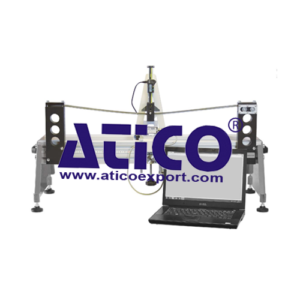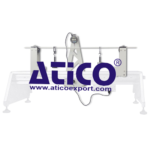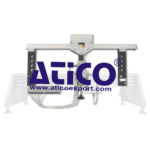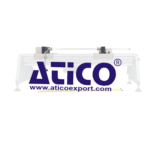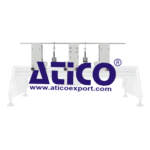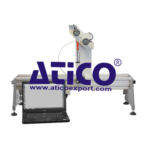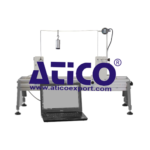Description
One of a range of experiment modules that fi t to the Structures platform this product helps students to understand the nature of plastic deformation and collapse in hot-rolled mild steel beams that can undergo large plastic deformations. This material is often used as a construction material in supporting beams or ‘rebar’ to reinforce concrete sections. Students fi t the specimen beam between two supports with a choice of fixing methods; simply supported, fixed or propped cantilever. One support includes roller bearings to allow horizontal translation. A load cell assembly measures and applies force at the mid span of the beam. A precision indicator measures the beam deformation. Students apply a load (moment) to the beam, forcing it to bend through the elastic region and into the plastic region where it deforms permanently, experiencing ’plastic collapse’ and the formation of ‘plastic hinges’. This allows them to appreciate the ratio between yield moment and the fully plastic moment (form or shape factor), showing how this ratio provides an additional safety factor. It explains how a structural element may fail, but still withstand loads to allow people to safely leave the structure or building. The different fixings allow students to predict the position of hinge formation and the loads that will cause failure. Students use textbook beam equations and bending moment diagrams to predict the results, comparing them to measured results. This helps confirm the reliability of the textbook equations and the accuracy of the experiment results.
Learning outcomes
- Elastic bending to plastic deformation of hot-rolled mild steel
- How the plastic region moves through the specimen section as the load increases
- Collapse load and the formation of plastic ‘hinges’
- Yield stress
- How beam fixings affect deformation of:
- simply supported beams
- fixed or ‘encastre’ beams
- a propped cantilever
- hape of a collapsed beam due to hinge formation.
- Form or shape factor of a beam and the additional factor of safety it provides.
Specifications
ATICO is committed to a programme of continuous improvement; hence we reserve the right to alter the design and product specifcation without prior notice.
Dimensions and weight:
Nett (assembled): 920 mm long x 130 mm front to back and 570 mm high and 18 kg
Approximate primary packed (with storage tray): 0.07 m3 and 20 kg
Space Needed:
1500 mm x 600 mm, level bench or desk
Items Included:
Two beam supports with two fi xing methods
Support with digital deformation indicator of resolution 0.01 mm
Load cell of maximum capacity 650 N
Nine specimen beams of length 920 mm and nominal cross section 7.9 x 7.9 mm
Two cables
Hexagon tools for beam fi xings
Vernier caliper
Inclinometer
Storage tray
Comprehensive user guide
Operating Conditions
Operating environment:
Laboratory
Storage temperature range:
–25°C to +55°C (when packed for transport)
Operating temperature range:
+5°C to +40°C
Operating relative humidity range:
80% at temperatures < 31°C decreasing linearly to 50% at 40°C
